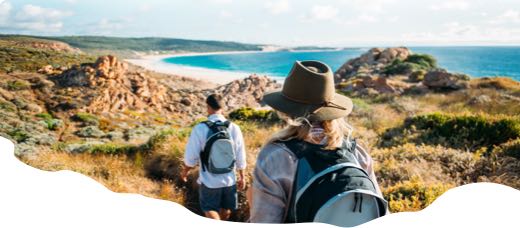
Shark Bay to Gnaraloo
A wonderland of world-class natural geography, the Shark Bay World Heritage Area is colourful and diverse and home to rare and unique flora and fauna - including one fifth of Australia's species of endangered mammals and over a third of all Australian bird species.
Australia's largest bay Shark and the most western point of the coast of Australia is made up of two peninsulas jutting out into the Indian Ocean. is one of only a handful of places around the world that meets the criteria for UNESCO World Heritage status. With over 1,000 kilometres of pristine beach and calm, inviting waters.

The Hamelin Pool Stromatolites boardwalk (currently closed) is home to the most diverse and abundant examples of stromatolites in the world. Also referred to as 'living fossils', stromatolites are living representatives of life over 3500 million years ago when there was no other complex life on Earth. The stromatolites can currently still be seen from the Hamelin Pool quarry.
The high diversity of fauna such as dolphins, fish, turtles and crustaceans found in Shark Bay thrive on natural seagrasses - along with over 10,000 dugongs.
One of the best ways to see this region is via the160 kilometre Shark Bay World Heritage Drive which runs between the Overlander Roadhouse on the NW Coastal Hwy to Monkey Mia, where a pod of dolphins have made their home and freely interact with visitors.
Avid surfers and campers will appreciate the offerings further up the road at Gnaraloo.
The Highlights:
- Drive: Shark Bay World Heritage Drive - accessible option
- Natural attraction: Hamelin Pool Stromatolites
- Paddle: Big Lagoon Paddle Trail, Francois Peron National Park
Accessible Option:
Shark Bay to Gnaraloo Trails List





-crop-340x230.jpg)













